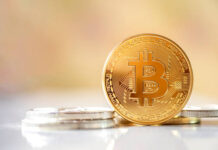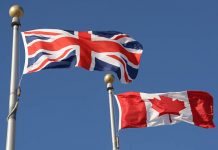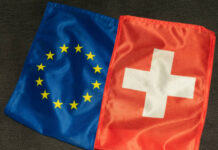The Swiss National Bank (SNB) cut its rate by another 25bp yesterday. The latest uptick in inflation didn’t bother the Swiss policymakers who considered that inflation remains in check in Switzerland. They preferred to give the economy – especially the Swiss exporter and families with mortgages – the additional support they needed. The market reaction was immediate, the euro-franc rallied above 0.95 level and the USDCHF immediately jumped back above its 200-DMA and the major 38.2% Fibonacci level on this year’s rebound, and hence returned to the positive trend. Even though we shall see short-term buying waves due to safe haven demand, the franc will likely remain under the pressure of a dovish SNB stance in the longer run and we could see one more rate cut before the year ends if inflation remains under control. The lower rates and a softer franc fueled appetite in Swiss equities as well. The SMI index gained 0.56%.
In the UK, a rate cut was not on the menu of the Brits on Thursday, but the accompanying statement was ‘finely balanced’, more dovish than expected and revived the expectation that the Bank of England (BoE) could announce a rate cut as early as in August. And because the market was pricing a rate cut not before November before the meeting, yesterday’s decision sent Cable to 1.2654. There is one more hurdle to an August cut, and it’s the BoE’s new member Claire Lombardelli who could be more ‘hawkish’ and may prevent the dovish camp from reaching the 5 voters needed to secure a cut. Right now, we are at 2.
Anyway, the more dovish than expected BoE statement, and a softer sterling boosted appetite in FTSE 100. A further advance in oil prices certainly helped. US crude tested the $82pb resistance as the EIA data showed that US oil inventories declined 2.5-mio barrel last week. European stocks on the continent were also better bid. The Stoxx 600 jumped almost 1% and the French CAC 40 gained more than that after France’s first government bond sale since Macron called snap election saw a healthy demand. Investors are worried but not devastatingly worried about the outcome of the upcoming snap election that could offer Marine Le Pen’s National Rally a majority in the Parliament. Mood in Europe is slightly better at the end of this week than it was by the end of last week.
For once, US stocks didn’t follow up on the European session gains despite soft data that was released there. Yet, the US building permits fell and housing started fell more than5% in May Philadelphia Fed’s manufacturing index eased unexpectedly in June. Plus, a $21bn TIPS auction saw strong demand. Alas, appetite wasn’t there. The US 2-year yield jumped to 4.75%, the 10-year yield recovered to 4.27% and the S&P500 fell – after hitting a fresh record. Some believe that yesterday’s selloff was motivated by soft data – that came in too soft to cheer up investors. To me, yesterday’s reluctance to flock into the US stocks had more to do with investors psychology. Nasdaq 100 flirted with the 19980 level this week. We are very, very close to the 20’000 super-psychological level, and investors may be – but just may be – thinking that the tech rally – which is the only reason we see the major US indices renew record after record – is now overstretched, and that the valuations have gone well ahead of themselves and that it could be time to take a pause, and maybe put some of the profits in pocket.
Today, it’s the triple witching day, about $5.5 trillion index futures, options, stock options and ETFs will expire at the same time. Given that we are at psychologically crucial, irrationally high, and mathematically overstretched levels, we could see surprise turns and twists in positioning.
A last word for the FX. The US dollar index jumped yesterday despite soft economic data. The selloff in major currencies like the franc and the pound helped lifting appetite in the US dollar. The EURUSD returned to 1.07 and rebounded from that level. We will unlikely see the same selloff we did before last weekend as the French political risks are better understood and better digested by now. The USDJPY, however, is on an unstoppable rise yet again, since the Bank of Japan (BoJ) decided not to soften its bond purchases at last week’s meeting. That, combined to a softer than expected core CPI figure and weaker-than-expected PMI data, fueled the JPY bears and sent the USDJPY above 159 this morning. We are now disquietingly close to 160, a level that previously saw the BoJ intervene to stop the bleeding.













